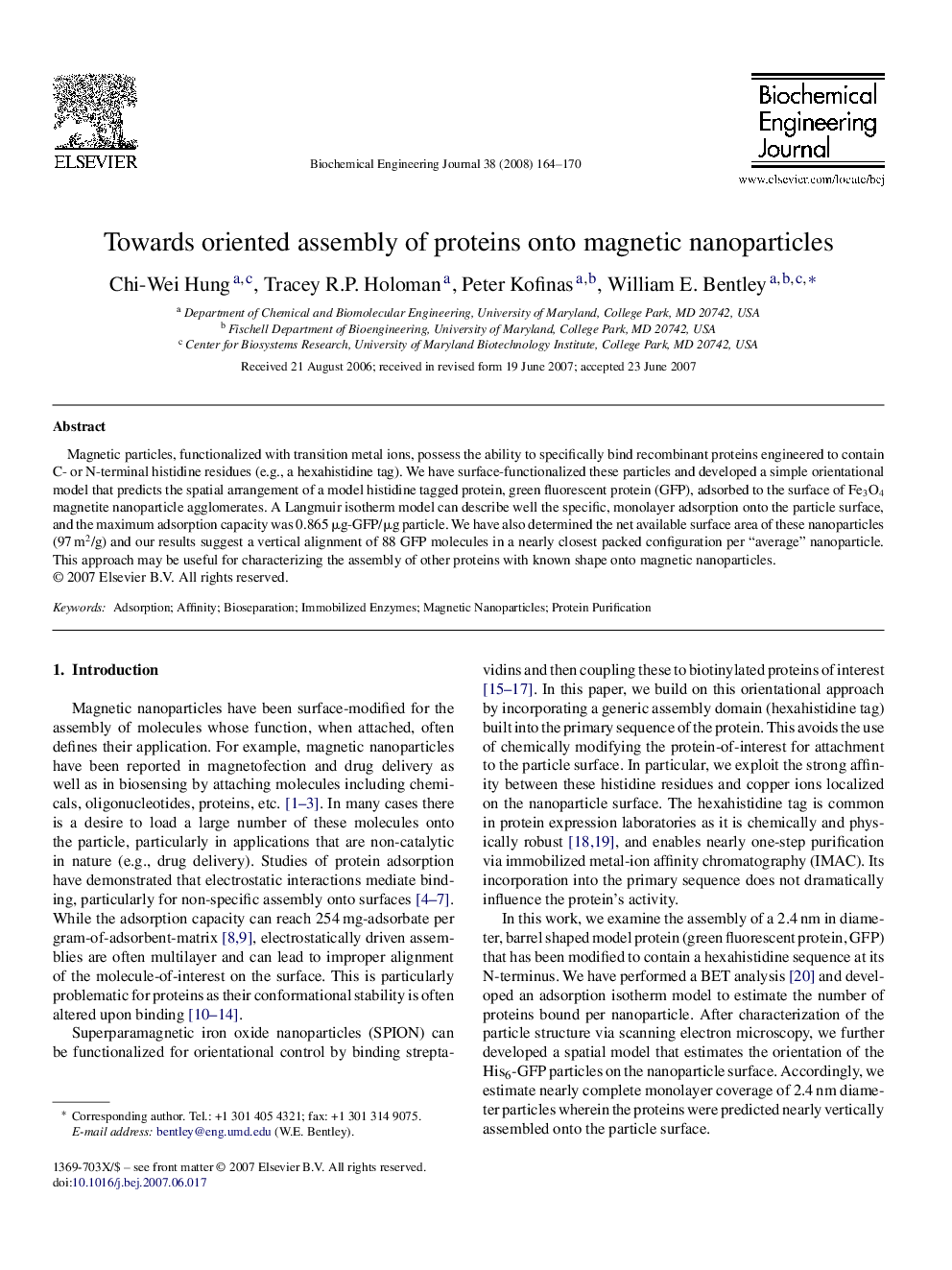| Article ID | Journal | Published Year | Pages | File Type |
|---|---|---|---|---|
| 4563 | Biochemical Engineering Journal | 2008 | 7 Pages |
Magnetic particles, functionalized with transition metal ions, possess the ability to specifically bind recombinant proteins engineered to contain C- or N-terminal histidine residues (e.g., a hexahistidine tag). We have surface-functionalized these particles and developed a simple orientational model that predicts the spatial arrangement of a model histidine tagged protein, green fluorescent protein (GFP), adsorbed to the surface of Fe3O4 magnetite nanoparticle agglomerates. A Langmuir isotherm model can describe well the specific, monolayer adsorption onto the particle surface, and the maximum adsorption capacity was 0.865 μg-GFP/μg particle. We have also determined the net available surface area of these nanoparticles (97 m2/g) and our results suggest a vertical alignment of 88 GFP molecules in a nearly closest packed configuration per “average” nanoparticle. This approach may be useful for characterizing the assembly of other proteins with known shape onto magnetic nanoparticles.
